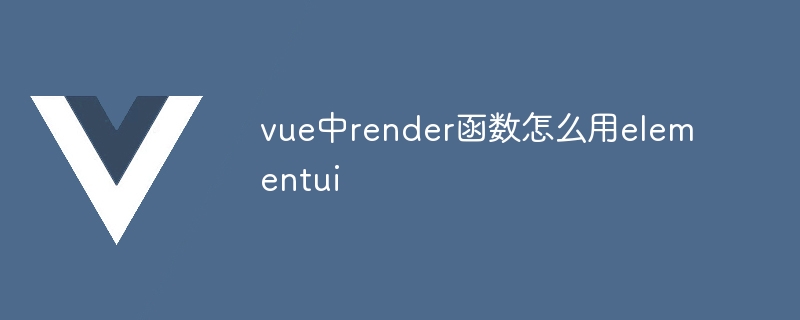Home >Web Front-end >Vue.js >How to use elementui for render function in vue
How to use elementui for render function in vue
- 下次还敢Original
- 2024-05-09 19:09:171243browse
The render function is used to create a virtual DOM in a Vue.js application. In Element UI, you can integrate Element UI components into the render function by rendering the component directly, using JSX syntax, or using scopedSlots. When integrating, you need to import the Element UI library, set properties in kebab-case mode, and use scopedSlots to render slot content (if the component has slots).

Usage of render function and Element UI in Vue
What is render Function?
render function is a special function in Vue.js, used to create virtual DOM (Virtual DOM). It accepts a function as argument that returns a virtual DOM representation of the Vue component.
Using the render function in Element UI
Element UI is a UI framework for building Vue.js applications. It provides a series of components such as buttons, input boxes and tables. To use components in Element UI, you can use the render function in the following ways:
1. Render Element UI components directly:
<code class="javascript">render() {
return h('el-button', {
onClick: this.onClick
}, '按钮')
}</code>
2. Use JSX syntax to render Element UI components:
<code class="javascript">render() {
return (<el-button onClick={this.onClick}>按钮</el-button>)
}</code>
3. Use scopedSlots to render Element UI components:
<code class="javascript">render() {
return h('el-button', {
scopedSlots: {
default: props => {
return h('span', props.children)
}
}
})
}</code>
Note:
- When using the Element UI component in the
renderfunction, you need to import the Element UI library. - When rendering the properties of the Element UI component in the
renderfunction, use kebab-case (hyphen separated) writing, such ason-click. - If the component has slots, you can use
scopedSlotsto render the slot content.
The above is the detailed content of How to use elementui for render function in vue. For more information, please follow other related articles on the PHP Chinese website!
Related articles
See more- How does a subcomponent in Vue get the value of its parent component? (props implementation)
- What is the difference between jquery and vue
- How to solve the problem that vue-cli-service is not an internal or external command
- vue scaffolding installation steps
- Using the render function in Vue to optimize application rendering performance

